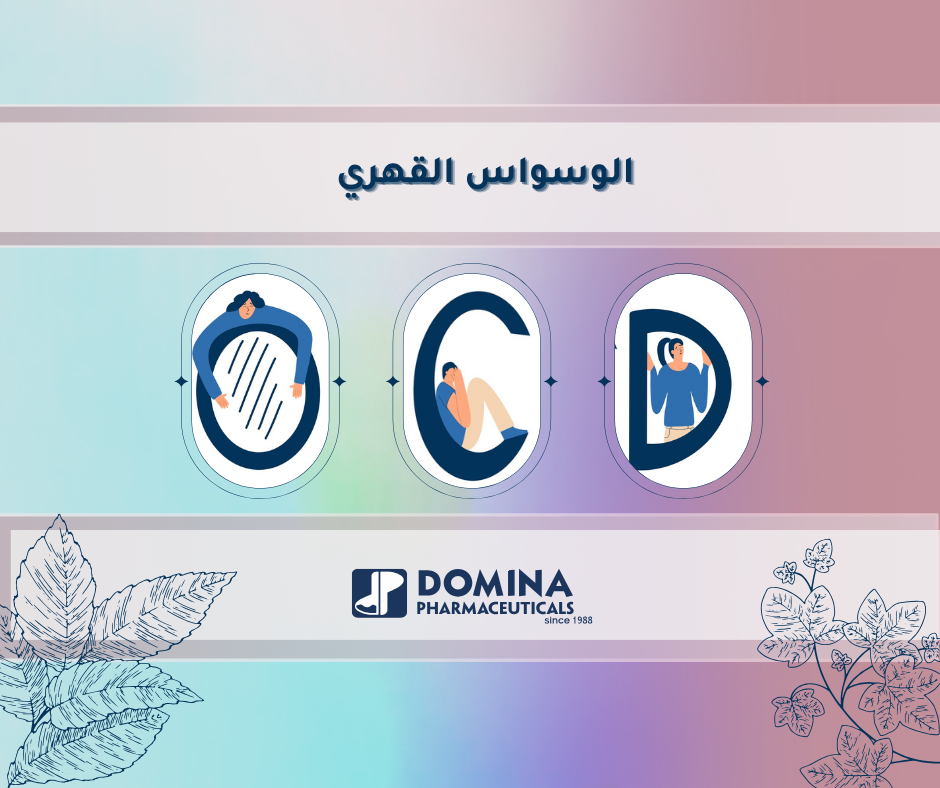
Obsessive-Compulsive Disorder (OCD):
It is a long-term disorder in which the affected person experiences uncontrollable thoughts or sensations (called obsessions) that drive them to repeat certain actions (compulsions), hindering their ability to perform daily activities and social interactions optimally
Symptoms of OCD:
- Obsessions:
- These are repetitive and persistent thoughts, urges, or images that cause anxiety, fear, or disgust, such as:
- Fear of contamination by people or the environment
- Fear of harming oneself or someone else
- Unwanted thoughts or mental images related to sex or religious beliefs
- Excessive concern with order and extreme attention to detail when arranging things
- Many individuals with OCD realize that these thoughts are products of their minds and are excessive or illogical. However, they cannot escape the distress caused by them, leading them to try to alleviate this discomfort through actions known as compulsions
- Compulsive Actions:
- These are repetitive behaviors that a person engages in as a response to obsessions. In severe cases, performing these actions can take a long time and significantly impact the person's life. Examples include:
- Excessive bathing, cleaning, and hand washing
- Checking things repeatedly, such as locks, keys, devices, doors, and so on
- Rituals related to numbers, like performing a task a certain number of times or preferring/avoiding specific numbers
- Arranging things in a specific way
- Compulsive actions also involve avoiding certain people, places, or situations that trigger obsessions, such as refusing to shake hands or touching doorknobs
Causes:
- If a family member has it, it may be acquired behavior or possibly due to genetics
- Some individuals with OCD have low serotonin levels
- OCD may be more common in individuals who have experienced bullying, abuse, or neglect, and it sometimes starts after a significant life event like birth or loss
Affected Individuals:
- OCD affects both men and women, as well as children
- However, women are more susceptible, being 1.6 times more likely to be affected by OCD compared to men
- It can occur at any age, but it's more common during the following periods:
- Between 8 and 12 years old and early adolescence
- In the late teenage years
Diagnosis:
According to the DSM-5 criteria, a diagnosis of OCD is made if the individual experiences symptoms on a daily basis for one hour or more, and these symptoms significantly impact their social and professional life
Treatment:
There are two types of treatment: behavioral and pharmacological. It is recommended to combine both for better results.
Cognitive-Behavioral Therapy (CBT):
- This involves helping the patient confront their thoughts and obsessions without "correcting" them through compulsive actions.
Pharmacological Treatment:
First-line treatment:
- Selective Serotonin Reuptake Inhibitors (SSRIs), as they can rebalance neurotransmitters in the brain
- The U.S. Food and Drug Administration (FDA) has approved the use of several drugs from the SSRIs group at the maximum dosage for treating obsessive-compulsive disorder. The most important ones are:
Fluoxetine:
- Dosage:
- For adults: 20 - 80 mg
- For children and adolescents: 20 - 60 mg
- Available under the name Fluoxetine Domina 20
Sertraline:
- Dosage:
- For adults: 50 - 200 mg
- For children and adolescents: 100 - 200 mg
- Available under the name Lostrile
Fluvoxamine:
- Dosage:
- For adults: 50 - 300 mg
- For children and adolescents: 50 - 300 mg
Paroxetine:
- Dosage:
- For adults: 20 - 60 mg
- For children and adolescents: 20 - 60 mg
Notes:
- The treatment should continue for 8 - 12 weeks (including 4 - 6 weeks of administering the maximum tolerated dose by the patient)
- Some patients may need to start with half the dose to minimize side effects
- For individuals with rapid metabolism, higher doses may be used or in case of no response after 8 weeks
Second-line of treatment:
- If there is no response with the treatment using one of the SSRIs, another drug from the same group will be switched to
- Alternatively, a switch to clomipramine can be considered
Clomipramine:
- Tricyclic antidepressant (TCAs)
- Approved by the U.S. Food and Drug Administration (FDA) for treating obsessive-compulsive disorder
- Dosage:
- For adults: 25 - 250 mg
- For children and adolescents: 25 - 200 mg
- Available under the name Clomi-Franil
References:
- Association AP. What Is Obsessive-Compulsive Disorder? 2023 [Available from: https://www.psychiatry.org/patients-families/obsessive-compulsive-disorder/what-is-obsessive-compulsive-disorder.
- NHS. Obsessive compulsive disorder (OCD) 2023 [Available from: https://www.nhs.uk/mental-health/conditions/obsessive-compulsive-disorder-ocd/overview/.
- Foundation IO. Who Gets OCD? 2023 [Available from: https://iocdf.org/about-ocd/who-gets-ocd/.
- Yasgur S. 2020 [Available from: https://www.medscape.com/viewarticle/934423.
- America ADAo. Clinical Practice Review for OCD 2021 [Available from: https://adaa.org/resources-professionals/practice-guidelines-ocd.